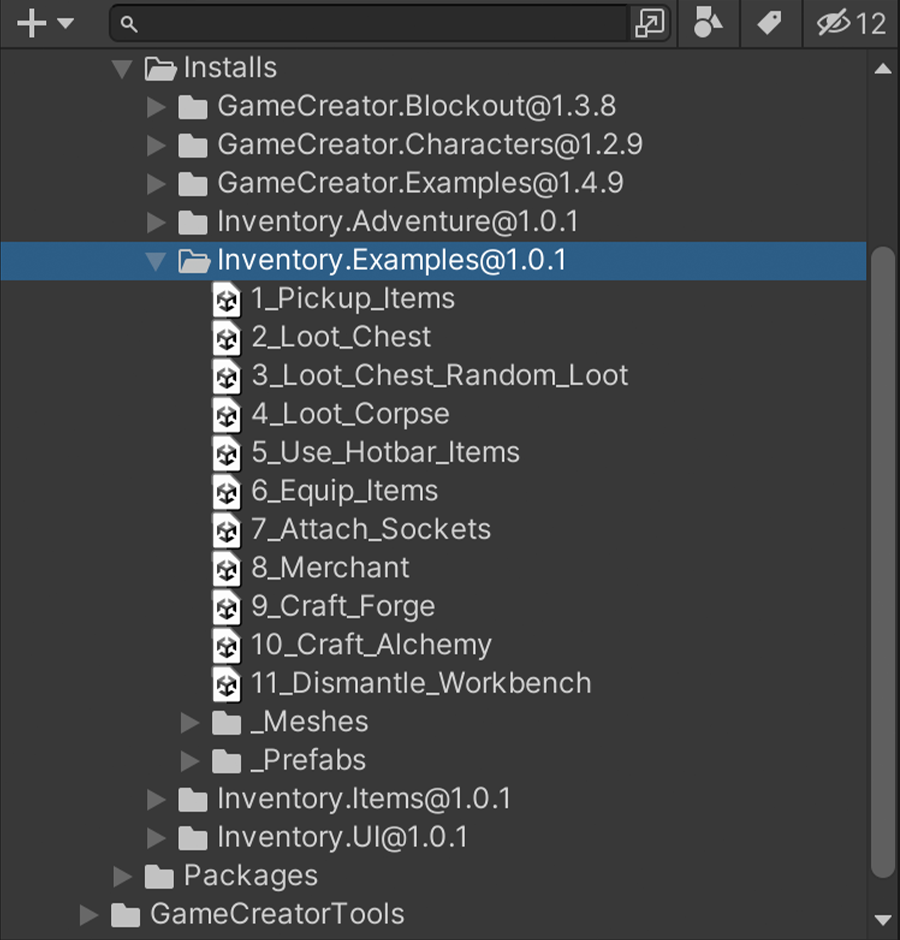Setup¶
Welcome to getting started with the Inventory module. In this section you'll learn how to install this module and get started with the examples which it comes with.
Prepare your Project¶
Before installing the Inventory module, you'll need to either create a new Unity project or open an existing one.
Game Creator
It is important to note that Game Creator should be present before attempting to install any module.
Install the Inventory module¶
If you haven't purchased the Inventory module, head to the Asset Store product page and follow the steps to get a copy of this module.
Once you have purchased it, click on Window → Package Manager to reveal a window with all your available assets.
Type in the little search field the name of this package and it will prompt you to download and install the latest stable version. Follow the steps and wait till Unity finishes compiling your project.
Examples¶
We highly recommend checking the examples that come with the Inventory module. To install them, click on the Game Creator dropdown from the top toolbar and then the Install option.
The Installer window will appear and you'll be able to manage all examples and template assets you have in your project.
- Items: Template items ready to be used in your games
- UI: Samples for creating loot user interfaces, inventories, merchants and crafting windows
- Examples: A collection of scenes that will help you understand each and every option of the Inventory module, in an organized and tidy way.

The Examples requires both the Items and UI extensions in order to work.
There is also an extra skin for adventure games that allows to swap the default inventory for a typical old-school point and click inventory.
Dependencies
Clicking on the Examples install button will install all dependencies automatically.
Once you have the examples installed, click on the Select button or navigate to Plugins/GameCreator/Installs/Inventory.Examples/.
